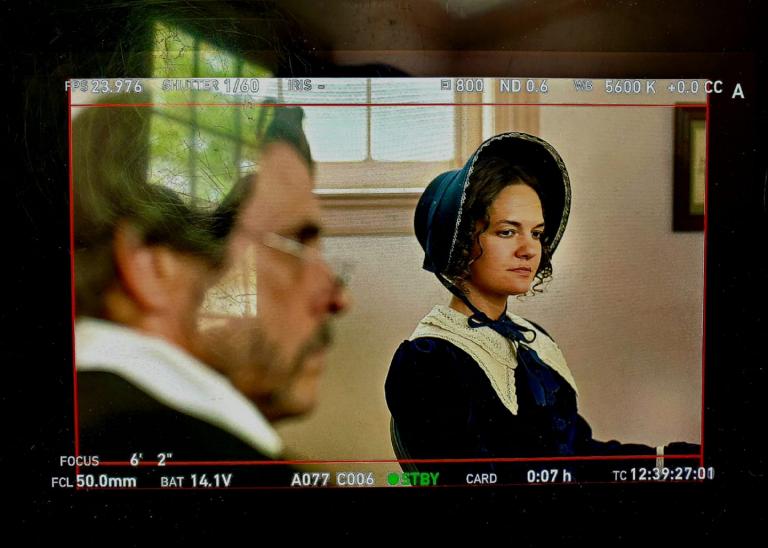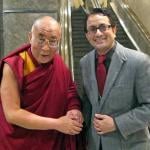
I’m pleased to report that, as of now, the Interpreter Foundation’s movie Witnesses is scheduled to open on the weekend of 4-5 June (and, in at least some locations, on 2-3 June, as well) in fifty-seven theaters located in eight states — Arizona, California, Colorado, Idaho, Nevada, Oklahoma, Texas, and Utah. We have just added a large number of theaters, many (but not all) of them in Arizona.
Please have a look at the witnessesfilm.com website to see whether or where it will be playing near you and to purchase tickets — and to request it for your community if it’s not currently scheduled for showing near your home. And please tell your friends and relatives about the film.
***
A new scripture roundtable has been made available (at no charge) on the website of the Interpreter Foundation”
The discussants in the Interpreter Radio Roundtable for Come, Follow Me Doctrine and Covenants Lesson 22, “Anxiously Engaged in a Good Cause,” on D&C 58-59, were Bruce Webster, Kris Frederickson, and Mike Parker. This roundtable was extracted (and freed from commercial interruptions) from the 18 April 2021 broadcast of the Interpreter Radio Show. The complete show may be heard at https://interpreterfoundation.org/interpreter-radio-show-april-18-2021/. The Interpreter Radio Show can be heard Sunday evenings from 7 to 9 PM (Utah time), on K-TALK, AM 1640, or you can listen live on the Internet at ktalkmedia.com.
Also new on the website of the Interpreter Foundation, from Jonn Claybaugh:
***
However, lots and lots of good stuff has already appeared on the Interpreter website. Here are a few pieces from the past:
Daniel C. Peterson, “It Took a Village to Prepare for the Restoration”
Abstract: “No man,” wrote the early seventeenth-century English poet John Donne, “is an island entire of itself.” Likewise, nothing in human history springs entirely from a vacuum, ex nihilo. Even the Restoration, although it was initiated by God and is orchestrated in the heavens, draws on resources created by previous generations of men and women. We are borne on a tide of scriptural texts and freedoms bequeathed to us by our ancestors, whom we should not forget.
Abstract: Joseph Smith made various refining changes to the Book of Mormon text, most of them minor and grammatical in nature. However, one type of textual change has been virtually unstudied in Book of Mormon scholarship: extemporaneous change that was present the moment Smith dictated the original text to his scribes. This type of change appears to have been improvisational, a fix or repair made in the middle of a thought or expression. I study these improvisations in depth — where they might appear historically, their purpose, and their authorship — in two articles. The evidence points to ancient authors and editor-engravers whose extemporaneous changes appeared during the early layers of the Book of Mormon’s construction. In this paper, Article One, we study the improvisations found in the quoted ancient texts of ancient prophets, then in the embedded texts of authors who improvise, and finally in the improvisational narratives of the major editor-engravers — Mormon, Nephi, and Moroni. The findings tell us much about the Book of Mormon as scripture, and about the construction and compilation of scripture by ancient editors and authors.
Abstract: Joseph Smith made various refining changes to the Book of Mormon text, most of them minor grammatical in nature. However, one type of textual change has been virtually unstudied in Book of Mormon scholarship: extemporaneous change that was present the moment Smith dictated the original text to his scribes. This type of change appears to have been improvisational, a fix or repair made in the middle of a thought or expression. I study these improvisations in depth — when they appeared historically, their purpose, and their authorship. The evidence of Article One points to ancient authors and editor-engravers whose extemporaneous changes appeared during the early layers of the Book of Mormon’s construction. But how were these improvisations affected by later contributors? In this paper, Part 2, we study the improvisational work of Moroni as compiler, finishing-editor, and conservator, and of Joseph Smith as modern translator. The findings tell us much about the Book of Mormon as scripture, and about the construction and compilation of scripture by ancient editors and authors.
A. Keith Thompson, “The Council of Fifty and Its Minutes: A Review”
Review of Matthew J. Grow et al., eds., The Joseph Smith Papers: Administrative Records, Council of Fifty, Minutes, March 1844–January 1846 (Salt Lake City: The Church Historian’s Press, 2016). 525 pp. + introduction, appendixes, reference material, index, etc. $59.95.
Abstract: The publication of the Council of Fifty minutes is a momentous occasion in modern studies of Mormon history. The minutes are invaluable in helping historians understand the last days of Joseph Smith and his project to establish the Kingdom of God on the earth. They offer an important glimpse into the religious and political mindset of early Latter-day Saint leaders and shed much light on events once obscured by lack of access to the minutes. The Joseph Smith Papers Project has outdone itself in its presentation of the minutes in the latest volume of the series. The minutes are essential reading for anyone interested in early Mormon history.
Brian C. Hales, “Opportunity Lost”
A Review of Carol Lynn Pearson, The Ghost of Eternal Polygamy: Haunting the Hearts and Heaven of Women and Men. Pivot Point Books, 2016, 226 pages with endnotes. $19.95.
Abstract: The Ghost of Eternal Polygamy boldly declares “that plural marriage never was — is not now — and never will be ordained of God” (21) and that the Mormon religion is guilty of “extraordinary spiritual abuse” (22) due to the practice. Seven distinct problems associated with plural marriage are identified, four of which have merit: polygamy history is often messy; earthly polygamy is unfair to women; widows and widowers are treated differently regarding future sealings; and the cancellation of sealings has not always paralleled the desires of the participants. Three additional issues form the bulk of the discussion and are based upon assumptions about eternity: polygamy is required in the celestial kingdom; child-to-parent sealings may be unfair in eternity; and eternal polygamy will be everlastingly unfair to women. This review addresses these observations, noting that the idea that all exalted beings are polygamists is false, revelation has not defined the exact nature of earthly parent–child relationships in the afterlife, and the dynamics of eternal plural marriage have not been revealed. The Ghost of Eternal Polygamy seeks to reinforce fears of the unknown while ignoring the abundant messages that God promises eternal joy and happiness to those who live worthily.
Sharon Eubank, “The Song I Cannot Sing”
Posted from Richmond, Virginia











